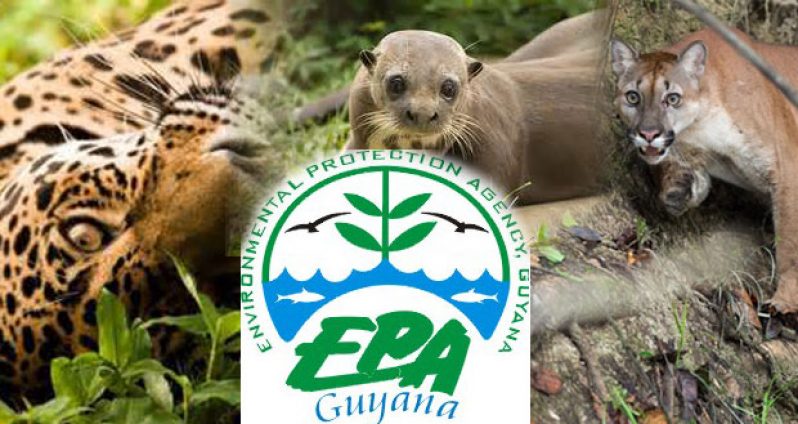Effective resource management and achieving a green economy significantly hinges on knowing what we have. Guyana is known as the little country with vast natural wealth. However, its continued sustainability cannot be assured, unless its current use is assessed and managed.
To this end, with funding from the United Nations Development Programme (UNDP) and support from diverse stakeholders, the State of Guyana’s environment was accessed and the report launched by the Environmental Protection Agency on June 05, 2017, at the Umana Yana.
Staying on course…
Keeping abreast with the state of the environment allows us to stay on course towards the Sustainable Development Goals even as the Green State Development Strategy provides impetus for holistic vision and strategic growth. Further, with the emerging oil and gas sector, the need for firm management systems to maintain the integrity of the environment is apparent.
In attendance were approximately 150 stakeholders including the Hon. Minister of State, Joseph Harmon, UNDP Resident Representative, Ms. Mikiko Tanaka, Director, Department of Environment, Ms. Ndibi Schwiers, Heads of Agencies and key stakeholders.
The Report presented data on air quality, freshwater resources, the forestry sector, the mining sector, biological diversity, waste management and environmental education and awareness. Below is an overview of what the report presented, which will be presented in greater details in subsequent public awareness materials.
Air Quality
According to the report, the greenhouse gases of interest include carbon dioxide, methane, nitrogen oxide and volatile organic compounds. Opportunities for the implementation of renewable energy projects, increased shares in the technologies associated with renewable energies, and improving the efficiency of the energy sector were also stated mitigation measures.
Water Quality
Human-induced pressures from the agriculture, waste management and mining sectors are main contributors to biological and chemical contamination and high turbidity, as stated in the Report. In this regard, a number of strategies were recommended including the establishment of a National Water Agency.
Waste Management
The lack of adequate waste disposal facilities, inadequate enforcement capacity, illegal dumping of waste, and lack of proper coordination among authorities responsible for waste management were identified in the Report. As such, an integrated approach and technical capacity building were recommended to improve the current status of waste management in the country.
Biological Diversity
On the positive side, the Report stated that Guyana’s forests and ecosystems are largely intact and functional, with very low rates of destruction, degradation and conversion. However, the threats of overharvesting, habitat loss, pollution, climate change and invasive species to our forest and biodiversity are real and cannot be underestimated.
Another positive note, was that Guyana as a Party to a number of Multilateral Environmental Agreements has implemented national policies and strategies to conserve and protect its rich biodiversity and forest cover. It was also mentioned that while progresses were made in environmental communication, education and awareness, efforts in this regard should be heightened and extended in scale and scope.
A copy of Guyana’s State of the Environment Report can be accessed on the EPA’s website; www.epaguyana.org. Check it out to identify the major areas of concern. This is the first step in determining what you can do to aid in mitigating negative impacts, thereby, fostering positive economic growth and environmental sustainability.
You can share your ideas and questions by sending letters to: “Our Earth, Our Environment”, C/O ECEA Programme, Environmental Protection Agency, Ganges Street, Sophia, GEORGETOWN, or email us at: eit.epaguyana@gmail.com.



.jpg)








